#Springburn
Text







2 bedroom flat for sale on Broomfield Road, Springburn, Glasgow
Asking price: £155,000
11 notes
·
View notes
Photo

InstaDan and the monkey man.🙊 #mondaymood #Springburn #Glasgow #writerscommunity #writersofinstagram #selfie #DannyCarr #stripes (at Springburn, East Dunbartonshire, United Kingdom) https://www.instagram.com/p/Cf7I0PHK0EY/?igshid=NGJjMDIxMWI=
0 notes
Photo
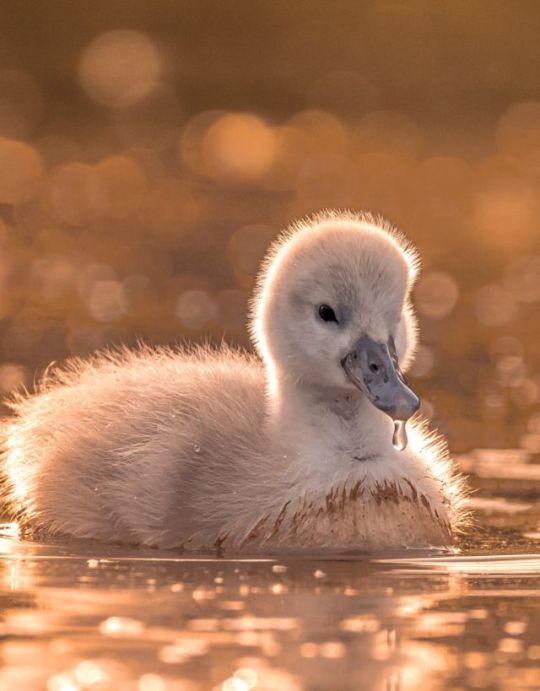
Cygnet ring-ing wet: This little bird in Springburn Park, Glasgow.
Photographer: Kim Black
#kim black#photographer#cygnet#bird photography#glasgow#scotland#animal#springburn park#nature#duckling
28 notes
·
View notes
Photo

Porter Electrical Services provide you the best Electrical Installation in Springburn. Visit here: https://goo.gl/maps/d6aHFDiGEU3eLiz17
0 notes
Text

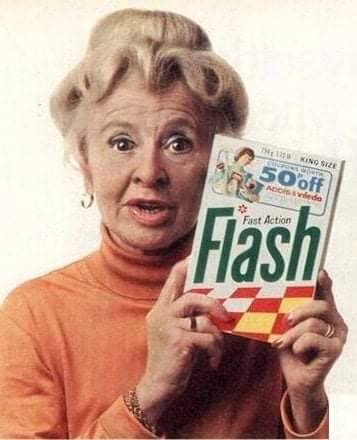
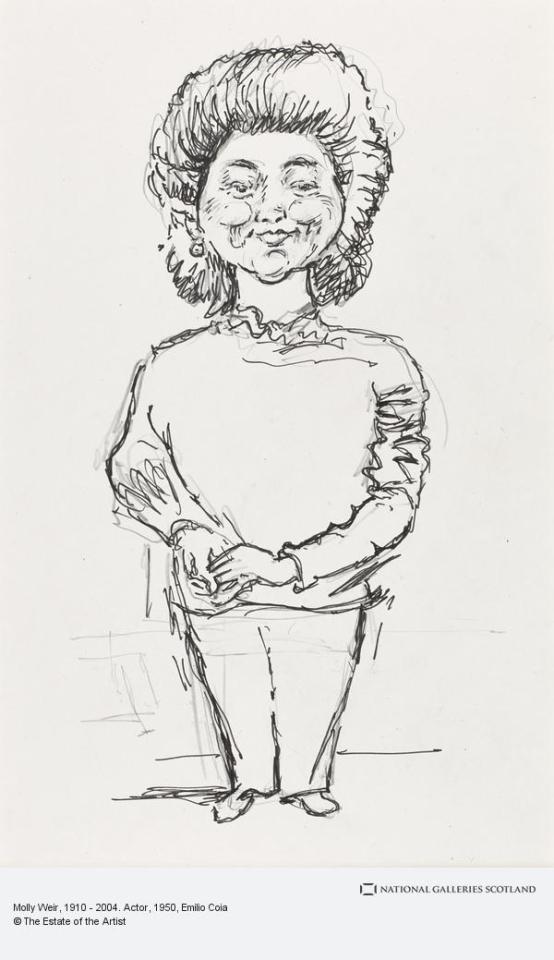

The actress Molly Weir passed away on November 28th 2004 aged 94.
Probably best known for the character Hazel the McWitch in the BBC TV series Rentaghost, Molly was brought up in the Springburn area, she began in amateur dramatics. In her early professional career, she was a well-known radio actress, featuring in many comedy shows,in the 50's sitcom Molly had a regular role as the housekeeper, Aggie McDonald, in Life With The Lyons. In film she played one of The Kerr sisters in The Prime of Miss Jean Brodie with Helena Gloag, a partnership she renewed in the Albert Finney film Scrooge, playing old sisters in debt to Mr Scrooge.
In the 1970s she was one of the presenters of Teatime Tales, a television series broadcast by STV in which she recalled her childhood. As well as the childrens programme Rentaghost Molly will be remembered by a lot of us as the woman on the Flash adverts and the tag "flash cleans floors/baths without scratching"
She was also a popular public speaker, newspaper columnist and her memoirs run to eight volumes.
After her death, Molly Weir's ashes were scattered on the banks of Loch Lomond, a favourite holiday location of both her and her famous brother Tom Weir; and almost all her estate (of nearly £1.9 million), was bequeathed to charities.
13 notes
·
View notes
Text
Dr. Ghassan Abu-Sittah: ‘Tomorrow is a Palestinian day’

On April 12, the German government prevented Dr. Ghassan Abu-Sittah from entering the country to address a conference in Berlin as a witness to the genocide in Gaza. The day before, on April 11, Abu-Sittah was installed as Glasgow University Rector in Bute Hall following his landslide election with 80% of the vote. Below is a transcript of Dr. Abu-Sittah’s address.
“Each generation must discover its mission, fulfill it or betray it, in relative opacity.”Frantz Fanon, The Wretched of the Earth
The students of Glasgow University decided to vote in memory of 52,000 Palestinians killed. In memory of 14,000 children murdered. They voted in solidarity with 17,000 Palestinian children orphaned, 70,000 wounded — of whom 50% are children — and the 4-5,000 children whose limbs have been amputated.
They voted to stand in solidarity with the students and the teachers of 360 schools destroyed and 12 universities completely leveled. They stood in solidarity with the family and the memory of Dima Alhaj, a Glasgow University alumni murdered with her baby and with her whole family.
At the beginning of the 20th century, Lenin predicted that real revolutionary change in Western Europe depended on its close contact with the liberation movements against imperialism and in the slave colonies. Glasgow University students understood what we have to lose when we allow our politics to become inhuman. They also understand that what is important and different about Gaza is that it is the laboratory in which global capital is looking at the management of surplus populations.
They stood next to Gaza and in solidarity with its people because they understood that the weapons that Benjamin Netanyahu uses today are the weapons that Narendra Modi will use tomorrow. The quadcopters and drones fitted with sniper guns – used so deviously and efficiently in Gaza that one night at Al-Ahli hospital we received over 30 wounded civilians shot outside our hospital by these inventions – used today in Gaza will be used tomorrow in Mumbai, in Nairobi and in Sao Paulo. Eventually, like the facial recognition software developed by the Israelis, they will come to Easterhouse and Springburn.
So, in reality, who did these students vote for? My name is Ghassan Solieman Hussain Dahashan Saqer Dahashan Ahmed Mahmoud Abu-Sittah and, with the exception of myself, my father and all of my forefathers were born in Palestine, a land that was given away by one of Glasgow University’s previous rectors. Three decades before his forty-six-word declaration announced the British government’s support for the settler colonization of Palestine, Arthur Balfour was appointed Lord Rector of the University of Glasgow. “A survey of the world… shows us a vast number of savage communities, apparently at a stage of culture not profoundly different from that which prevailed among pre-historic man,” said Balfour during his rectorial address in 1891. Sixteen years later, this antisemite masterminded the Aliens Act of 1905 to prevent Jews escaping from the pogroms of Eastern Europe from coming to safety in the United Kingdom.
In 1920, my grandfather Sheikh Hussain built a school with his own money in the small village where my family lived. There he set the foundations for a relationship that made education central to my family’s life. On May 15, 1948, Haganah forces ethnically cleansed that village and drove my family, who had lived on that land for generations, into a refugee camp in Khan Younis that now stands in ruins in the Gaza Strip. The memoirs of the Haganah officer who had invaded my grandfather’s house were found by my uncle. In these memoirs, the officer notes with incredulity how the house was full of books and had a certificate for a law degree from the University of Cairo, belonging to my grandfather.
The year after the Nakba, my father graduated from medical school at Cairo University and moved back to Gaza to work in UNRWA in its newly formed clinics. But like many of his generation, he moved to the Gulf to help build the health system in those countries. In 1963, he came to Glasgow to pursue his postgraduate training in pediatrics and fell in love with the city and its people.
And so it was that in 1988, I came to study medicine at Glasgow University, and here I discovered what medicine can do, how a career in medicine places you at the cold face of people’s lives, and how if you are equipped with the right political, sociological and economic lenses, you can understand how people’s lives are being shaped, and many times contorted, by political forces beyond their control.
And it was in Glasgow that I saw for the first time the meaning of international solidarity. Glasgow in that time was rife with groups that were organizing solidarity with El Salvador, Nicaragua, and Palestine. Glasgow City Council was one of the first to twin with cities in the West Bank and Glasgow University set up its first scholarship for the victims of the Sabra and Shatila massacre. It really was during my years in Glasgow that my journey as a war surgeon started, first as a student when I went to the first American war in Iraq in 1991; then with Mike Holmes to South Lebanon in 1993; then with my wife to Gaza during the Second Intifada; then to the wars waged by the Israelis on Gaza in 2009, 2012, 2014 and 2021; to the war in Mosul in Northern Iraq, to Damascus during the Syrian war and to the Yemen war. But it wasn’t until the 9th of October that I got to Gaza and saw the genocide unfold.
Everything that I had known about wars compared to nothing that I had seen. It was the difference between a flood and a tsunami. For 43 days, I watched the killing machines tear apart the lives and the bodies of the Palestinians in the Gaza Strip, half of whom were children. After I came out, the students of Glasgow University reached out for me to run for election as rector. Soon after, one of Balfour’s savages won the election.
So what have we learned from the genocide and about genocide over the last 6 months? We’ve learned that scholasticide, the elimination of whole educational institutions, both infrastructure and human resources, is a critical component of the genocidal erasure of a people. 12 universities completely flattened. 400 schools. 6,000 students killed. 230 school teachers killed. 100 professors and deans and two university presidents killed.
We also learnt, and this is something I found out when I left Gaza, that the genocidal project is like an iceberg of which Israel is only the tip. The rest of the iceberg is made up of an axis of genocide. This axis of genocide is the United States, the United Kingdom, Germany, Australia, Canada, and France… countries that have supported Israel with arms – and continue to support the genocide with arms – and have maintained political support for the genocidal project so that it would continue. We should not be fooled by the United States’ attempts at humanitarianizing the genocide: Killing people while dropping food aid by parachute.
I also discovered that part of the genocidal iceberg are genocide enablers. Little people, men and women, in every facet of life, in every institution. These genocidal enablers come in three types.
The first are those whose racialization and total othering of Palestinians has rendered them unable to feel anything for the 14,000 children who have been killed and for whom Palestinian children remain ungrievable. Had Israel killed 14,000 puppies or kittens they would have been completely destroyed by the barbarity of it.
The second group are those whom Hannah Arendt said in ‘The Banality of Evil’, “had no motives at all, except for extraordinary diligence in looking after his personal advancement.”
The third are the apathetic. As Arendt said, “Evil thrives on apathy and cannot exist without it.”
In April 1915, one year after the First World War began, Rosa Luxemburg wrote about German bourgeois society. “Violated, dishonored, wading in blood… the ravening beast, the witches’ sabbath of anarchy, a plague to culture and humanity.” Those of us who have seen, smelt, and heard what the weapons of war do to a child’s body by design, those of us who have amputated the unsalvageable limbs of wounded children can never have anything but the utmost disdain for all involved in the manufacture, design, and sale of these instruments of brutalism. The aim of weapons manufacturing is to destroy life and to ravage nature. In the arms industry, profits rise not only as a result of the resources captured in or through war, but through the process of destruction of all life, both human and environmental. The idea that there would be peace or an unpolluted world while capital grows by war is ludicrous. Neither the arms trade nor the fossil fuel trade, have any place at University.
So, what is our plan, this “savage” and his accomplices?
We will campaign for divestment from arms manufacturing and the fossil fuel industry in this University, both to de-risk the University following the International Court of Justice’s ruling that this is plausibly a genocidal war and the current case brought against Germany by Nicaragua for complicity in genocide.
Genocidal blood money made as a profit from these shares during the war will be used to set up a fund to help rebuild Palestinian academic institutions. This fund will be in the name of Dima Alhaj and in memory of a life cut short by this genocide.
We will form a coalition of student and civil society groups and unions to turn Glasgow University into a campus free from gender-based violence.
We will campaign to find concrete solutions to end student poverty at Glasgow University and to provide affordable housing to all students.
We will campaign for a boycott of all Israeli academic institutions that have progressed from being complicit in apartheid and the denial of education to Palestinians to genocide and the denial of life. We will campaign for a new definition of antisemitism that does not conflate anti-zionism and anti-Israeli genocidal settler colonialism with antisemitism.
We will fight with all othered and racialized communities, including the Jewish community, the Roma community, Muslims, black people, and all racialized groups, against the common enemy of a rising right-wing fascism, now absolved of its antisemitic roots by an Israeli government in exchange for their support for the elimination of the Palestinian people.
Only this week, just this week, we saw how a German government-funded institution censured a Jewish intellectual and philosopher, Nancy Fraser, because of her support of the Palestinian people. Over a year ago, we watched the Labour Party suspend Moshé Machover, a Jewish anti-zionist campaigner, for antisemitism.
On the flight up, I was fortunate enough to be reading ‘We Are Free to Change the World’ by Lyndsey Stonebridge. I quote from this book: “It is when the experience of powerlessness is at its most acute, when history seems at its most bleak, that the determination to think like a human being, creatively, courageously and complicatedly matters the most.” 90 years ago, in his “Solidarity Song,” Bertolt Brecht asked, “Whose tomorrow is tomorrow? And whose world is the world?”
Well, my answer to him, to you, and to the students of Glasgow University: It is your world to fight for. It is your tomorrow to make. For us, all of us, part of our resistance to the erasure of genocide is to talk about tomorrow in Gaza, to plan for the healing of the wounds of Gaza tomorrow. We will own tomorrow. Tomorrow will be a Palestinian day.
In 1984, when Glasgow University made Winnie Mandela its Rector in the darkest days of P. W. Botha’s rule under a brutal apartheid regime, supported by Margaret Thatcher and Ronald Reagan, no one could have dreamt that in 40 years South African men and women could be standing in front of the International Court of Justice defending the Palestinian people’s right to life as free citizens of a free nation.
One of this genocide’s aims is to drown us in our own sorrow. On a personal note, I want to hold space so that I and my family can grieve for our loved ones. I dedicate this to the memory of our beloved Abdelminim killed at 74 on the day of his birth. I dedicate it to the memory of my colleague Dr. Midhat Saidam who had stepped out for half an hour to take his sister to their house so that she could be safe with her children and never came back. I dedicate it to my friend and my colleague Dr. Ahmad Makadmeh who was executed by the Israeli army in Shifa Hospital just over 10 days ago with his wife. I dedicate it to the ever-smiling Dr. Haitham Abu-Hani, head of the Emergency Department at Shifa Hospital, who always met me with a smile and a pat on the shoulder. But most of all we dedicate this to our land. In the words of the ever-present Mahmoud Darwish,
“To our land, and it is a prize of war,
the freedom to die from longing and burning
and our land, in its bloodied night,
is a jewel that glimmers for the far upon the far
and illuminates what’s outside it …
As for us, inside,
we suffocate more!”
And so I want to end with hope. In the words of the immortal Bobby Sands, “Our revenge
will be the laughter of our children.”
HASTA LA VICTORIA SIEMPRE!
Source -
#free Palestine#free gaza#I stand with Palestine#Gaza#Palestine#Gazaunderattack#Palestinian Genocide#Gaza Genocide#end the occupation#Israel is an illegal occupier#Israel is committing genocide#Israel is committing war crimes#Israel is a terrorist state#Israel is a war criminal#Israel is an apartheid state#Israel is evil#Israeli war crimes#Israeli terrorism#IOF Terrorism#Israel kills children#Israel kills innocents#Israel is a murder state#Israeli Terrorists#Israeli war criminals#Boycott Israel#end Israeli terror#end Israeli occupation#end Israeli apartheid#Israel is a genocidal state#free Palestine 🇵🇸
4 notes
·
View notes
Video
Class Y9 shunter 68123 in Dock Street, Dundee - Jul 1952 by Frederick McLean
Via Flickr:
One of a collection of 3" x 2" amateur transport photographs, all dating between 1947 and 1952. This one was taken on the 17 July 1952 and is of the LNER class Y9 0-4-0ST British Railways shunter 68123 working in Dock Street, Dundee. 68123 was designed/built by Neilson and Company of Hyde Park Works, Springburn, Glasgow, in Aug 1899, working from the 'Dundee Tay Bridge' shed. It was withdrawn Aug 1960 and scrapped at the BR Cowlairs Works. The photo reverse is annotated with "68123 shunting in Dock Street, Dundee, 17/7/52". Old/new side by side overhead maps view:- maps.nls.uk/geo/explore/side-by-side/#zoom=16.0&lat=5... If there are any errors in the above description please let me know. Thanks. 📷 Any photograph I post on Flickr is an original in my possession, nothing is ever copied/downloaded from another location. 📷 -------------------------------------------------
#old photograph#old transport#steam engine#steam train#Dundee dock railway#steam shunter#68123#Dundee#old Dundee#Dundee transport#vintage transport#vintage photograph#1950s#British Railways#LNER#Class Y9#London and North Eastern Railway#Dundee docks#Dock Street Dundee#flickr
2 notes
·
View notes
Text
Thomas and Friends Headcanons (The Famous Eight)
NWR #1-Thomas Billinton
Basis: LB&SCR E2 w/ extended side tanks
Designer: L.B. Billinton
Buildplace: Brighton, East Sussex, England
Backstory: Thomas was one of the last E2's to be designed. Built on September 1, 1915, he would first work as a station pilot. During this time, he was painted in the LB&SCR's black livery with red lining. His number was #106. He came to Sodor during WW1 due to a shortage of tank engines on the island.
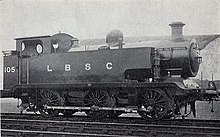
NWR #2-Edward Stewart-Pettigrew
Basis: heavily modified FR K2
Designer: W.F. Pettigrew
Buildplace: Springburn, Glasgow, Scotland
Backstory: Edward was one of the first K2's. Built on July 12, 1896, he would work for 9 years as an express engine near his build site before working in Cumbria until 1915, when he was sent to Sodor. During this time, he was painted in the FR's indian red livery with vermillion and black lining. His number was #37. Like Thomas, he came to Sodor due to a growing need for express engines.

NWR #3-Henry Gresley-Stanier
Basis: LNER A1/C1 hybrid (formerly) LMS Stanier Class 5 "Black 5" (currently)
Designer: Sir Nigel Gresley (old shape) Sir William Stanier (new shape)
Buildplace: Doncaster, South Yorkshire, England (old shape) Crewe, Cheshire, England (new shape)
Backstory: Around April 13, 1919, Henry was built from stolen blueprints of Sir Nigel Gresley by an unknown locomotive builder who held a grudge against Gresley. He hadn't realized that the blueprints were for an experimental locomotive. By the time he did, Henry had already been built. Along with many other problems, he had a small firebox, making him a poor steamer. The builder decided to sell Henry to the first available buyer, which was Sir Topham Hatt I. Due to his desperation for locomotives, Sir Topham Hatt had no choice but to keep Henry. When Henry arrived, he was painted in a special green livery with red stripes and had no number.
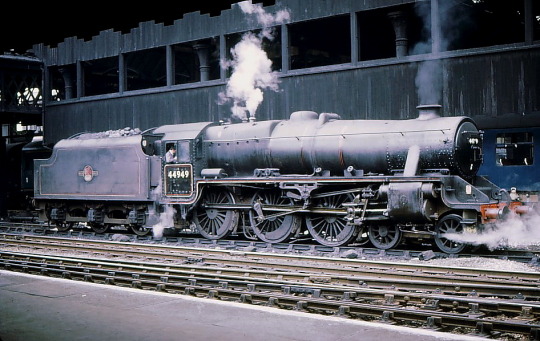
NWR #4-Gordon Gresley
Basis: LNER A1 Pacific
Designer: Sir Nigel Gresley
Buildplace: Doncaster, South Yorkshire, England
Backstory: Gordon was an experimental prototype for the A1 class, nicknamed the A0, built on February 20, 1922. Unlike his brothers and sisters, he was never given a number and only went out for test runs. He was sent to Sodor the next year due to the growing NWR's need for a premier express engine. When he arrived, he was painted in LNER black.

NWR #5-James Hughes
Basis-Modified L&YR Class 28
Designer: George Hughes
Buildplace: Horwich, Greater Manchester, England
Backstory: James was an experimental Class 28 with an extended pony truck and 5 ft 6 in driving wheels. Built on October 3, 1912, he worked for 12 years as a mixed-traffic engine. During this time, he was painted in the L&YR's black livery with red and white lining. His number was 52529. He was sent to Sodor to help with both passengers and freight.

NWR#6 Percival 'Percy' Avonside
Basis-GWR Trojan prototype
Designer: Avonside Engine Company
Buildplace: St. Phillip's, Bristol, England
Backstory: Percy was an experimental prototype of the GWR Trojan. At some point in his life, he received Hunslet components. Built on June 3, 1900, he worked for the GWR for 25 years as a station pilot. During this time, he was painted in the GWR's Middle Chrome Green livery with yellow lining. Soon after, he was put in a workshop, where he was bought by Sir Topham Hatt and sent to Sodor.

NWR #7-Tobias 'Toby' Holden
Basis- GER Class C53/LNER Class J70
Designer: James Holden
Buildplace: Stratford, London, England
Backstory: Toby was one of the last C53's built. Built on September 15, 1914, he would work at the Wisbech and Upwell Tramway as a mixed-traffic engine. He was numbered 62553. One summer in 1951, Sir Topham Hatt I, along with his wife, Lady Hatt, and grandchildren Bridget, Stephen, and Gerald, went to East Anglia for a holiday, and met Toby on the tramway. They liked him a lot, and the feeling was mutual. Later, when Thomas got in trouble, Sir Topham Hatt remembered Toby and brought him from his old railway after it had closed down. When Toby arrived on Sodor, he was painted in the LNER's brown livery with black sideplates with yellow LNER lettering on them.
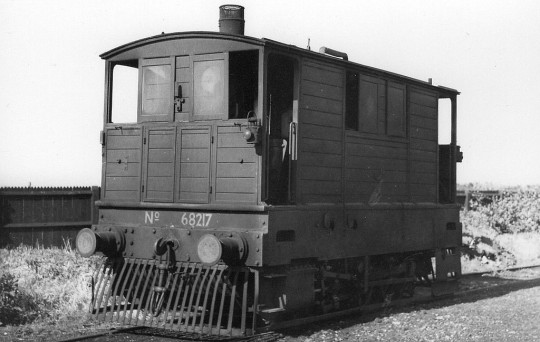
NWR #8-Montague 'Duck' Collett
Basis-GWR 5700 Class
Designer: Charles Collett
Buildplace: Springburn, Glasgow, Scotland
Backstory: Duck was one of the last 5700's built. Built on August 17, 1929, he would work at Paddington as a station pilot. He was numbered 5743. In 1955, Knapford was in need of a new station pilot, so Duck was sent over to Sodor. When he arrived, he was painted in BR black.
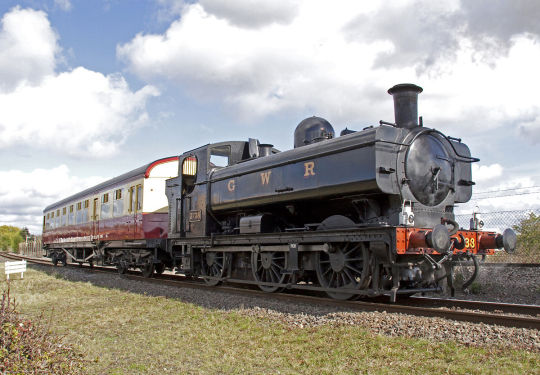
2 notes
·
View notes
Text
Glasgow gangster
boy from springburn threatens to stab someone from parkhead that shouts for the weemen
-~-~~-~~~-~~-~-
latest vid: “YOU LAUGH YOU LOSE | SCOTTISH EDITION #11| (YLYL)”
https://www.youtube.com/watch?v=x-jiUSx70jM
Compilation of the funniest of Scottish humor
i upload the best of Scottish comedy & more on my socials below
Link to channel
https://www.youtube.com/c/HAPPENING1312
facebook…
View On WordPress
0 notes
Text
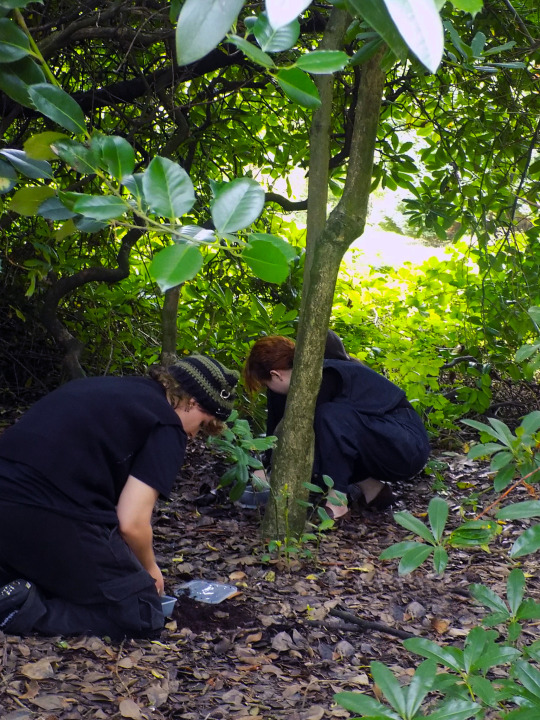
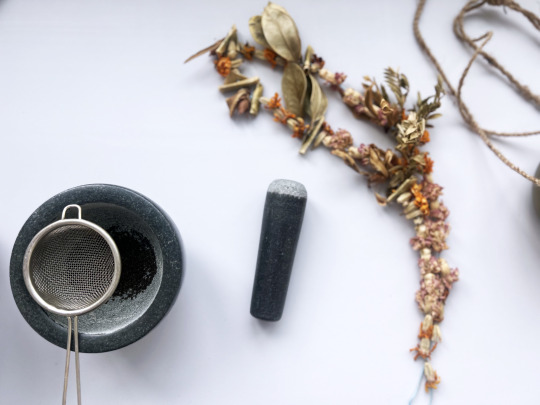

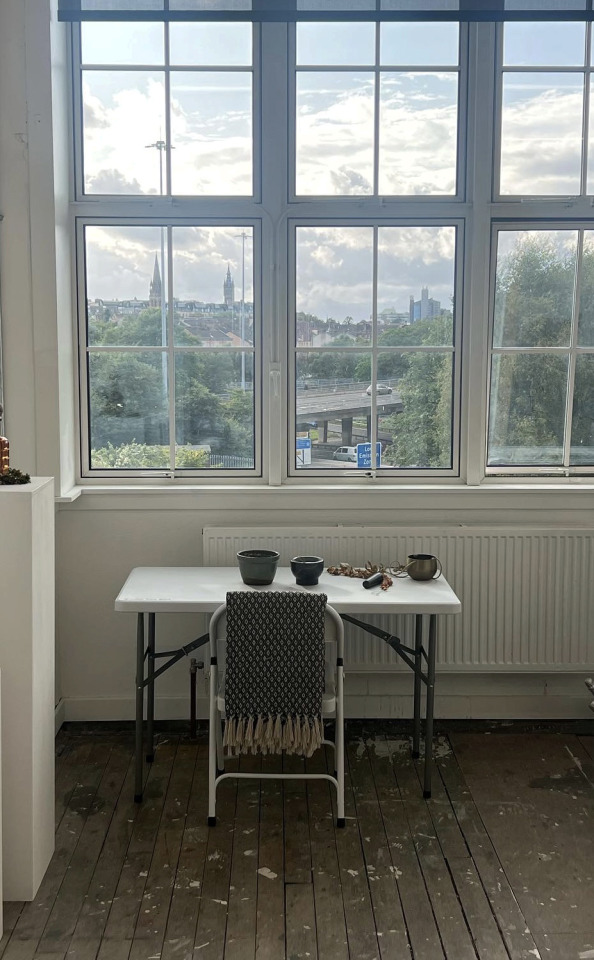


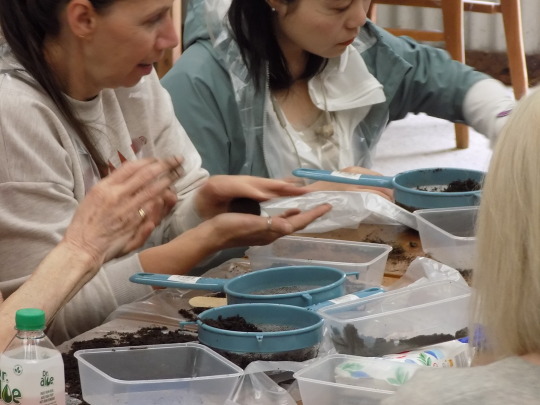


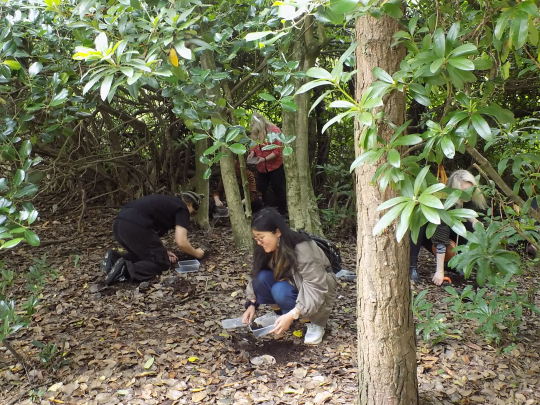
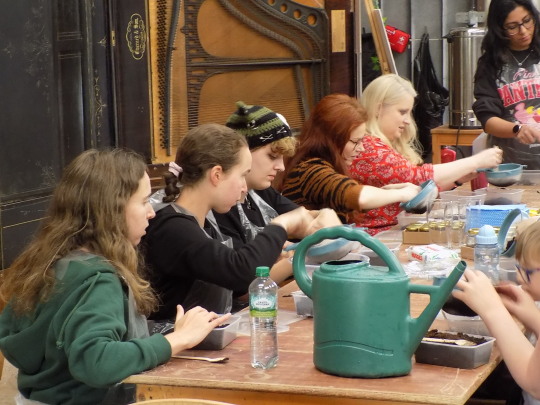
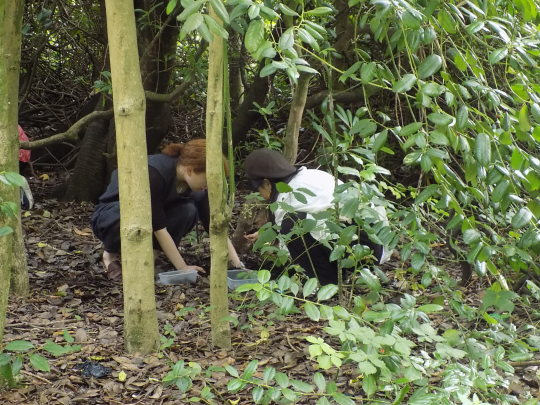
Katie Garden
MLitt Curatorial Practice
Commended, GSA Sustainability Post Grad Degree Show Prize 2023
Urban Green Space: Unheard Earth
Urban Green Space: Unheard Earth is an extension of the research I have carried out during the first two phases of my Masters. My exploration of community engagement began in the early stages of this course when I became familiar with Dr Megan Johnston and her research on slow curation. I was intrigued by Johnston’s practice and her consideration of the benefits of slow curation and how it positively impacts communities. Using art resources to benefit the lives of communities is an area in which I aim to further my own curatorial practice. Researching and working in such environments has made me question the role of the curator in a larger curatorial context and where I place myself as a curator.
Urban Green Space addresses the neglect experienced by Springburn Park and explores a creative response to urban green space and the impact it has on mental and physical wellbeing.
The project was a collaboration with the Springburn Auditorium and artist Sana Obaid. The result was The Art of Dorodango: Connecting with Earth and Cultivating Mindfulness workshop led by Sana.
The workshop as described by Lead Artist Sana Obaid Dorodango is a Japanese craft which involves making small balls of mud and polishing them with wet fingers to make them smooth. This craft is popular among children in Japan, but adults also take part in it as a hobby or artistic form. Dorodango transcends mere artistry; it is a gateway to profound meditation and creative expression; a process that demands complete attention, fostering mindfulness and focus.
Through my personal experience of crafting dorodango, I have discovered a deep connection with the earth—a profound sense of care and humility. While the act of shaping a simple mud ball may seem deceptively easy, attaining the perfect, radiant sphere requires
patience, unwavering focus, and unwavering dedication. As you hold the earth in your hands and transform it into something sublime, a sense of humility washes over you. The act of creation, rooted in the elemental nature of mud, imparts invaluable lessons—simple
yet profound. By truly immersing yours. lf in the process, your mind finds tranquillity, and you unearth the wisdom that lies within the simplicity of each step. Dorodango becomes a unique and meditative endeavour—one that fosters connectivity not only with the Earth but
also with our inner selves. In this workshop, we aspire to delve into the transformative power of dorodango, weaving together the threads of meditation and creative expression.
By embracing the simplicity of this ancient craft, we embark on a journey of self-discovery and connect deeply with the world around us. May this humble path, where the act of moulding mud becomes a profound testament to the artistry of existence itself.
Email
Instagram
1 note
·
View note
Link
via Twitter https://twitter.com/ukpowertools
0 notes
Text
Tales from Springburn, Skye and beyond streaming on all podcast platforms 😁
Listen to Skye Stories by Raymond Moore on Audible. https://www.audible.co.uk/pd/B0BNKMNRRF?source_code=ASSOR150021221000N
0 notes
Text
SSPCA appeals after pet snake found in Glasgow
New Post has been published on https://petn.ws/Eymc
SSPCA appeals after pet snake found in Glasgow
An animal charity is appealing for information after a pet snake was found in a Glasgow area. The SSPCA is asking the public to get in touch with information about a corn snake that was found in Springburn, North Glasgow. READ MORE: Popular Glasgow shop announces temporary closure In a picture posted on social meida, the […]
See full article at https://petn.ws/Eymc
#ReptileNews
0 notes
Link
0 notes
Photo

A bit of #mondaymotivationalquote for us all. #mondayquotes #humour #moodygrams #funnyquotes #writerscommunity #writingcommunity #writersofinstagram #writersofig #DannyCarr #qoutes #darkhumor #lifequotes #nihilistmemes #philosophy #Glasgow #Scotland #England #celticfc #rangersfc #Football #likesforlike #dankmemes #darkquotes #darkhumour #dark #uk (at Springburn, East Dunbartonshire, United Kingdom) https://www.instagram.com/p/CfmSbiKK1zt/?igshid=NGJjMDIxMWI=
#mondaymotivationalquote#mondayquotes#humour#moodygrams#funnyquotes#writerscommunity#writingcommunity#writersofinstagram#writersofig#dannycarr#qoutes#darkhumor#lifequotes#nihilistmemes#philosophy#glasgow#scotland#england#celticfc#rangersfc#football#likesforlike#dankmemes#darkquotes#darkhumour#dark#uk
0 notes
Text

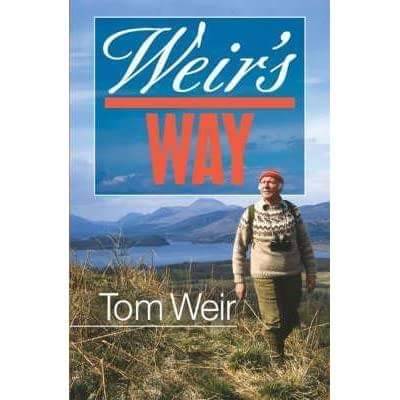

December 29th 1914 saw the birth of a Scottish legend, Tom Weir
Tom was born in Springburn, Glasgow the son of a locomotive engineer fitter, he belonged to the first generation of working-class outdoor men and began his career tramping the hills near the city whenever he could escape from the grocers shop where he worked.
The adventurer, is credited as introducing thousands of people to Scotland’s great outdoors through his tales of climbing, walking, nature conservation and campaigning. Tom is also fondly remembered for his long-running STV series, Weir’s Way, and his Scots Magazine column, which he wrote for 50 years.
Tom Weir was a writer, broadcaster, hill-walker, rock-climber, historian, naturalist and explorer. He was a popular sight traipsing across the Scottish countryside in his red bobble hat and Fair Isle jumpers since the 1930s.
There's probably not a single glen or mountain that he hadn't visited. Tom didn't just climb in Scotland, in 1950 he was a member of the first post-war Himalayan expedition and in 1952 was one of the first mountaineers to explore the hitherto closed ranges of Nepal, east of Katmandu.
His travels took him to the High Artic of East Greenland, the peaks of Northern Norway, the High Atlas of Morocco and the troubled frontier of the Iran, Syrian and Turkish Mountain lands known as Kurdistan.
He was the best of Scots and represented all that is good in our Nation. He spread enlightenment and joy wherever he went and will live on in our memories.
To this day the legend lives on with his statue at Balmaha on the shores of Loch Lomond, who hasn't visited and not had their photo taken beside it? Well me and ma wee Sis have, as seen in the pic.
Tom Weir passed away at the grand age of 91, on July 6th 2006, he was buried at in Kilmaronock Parish Church, near Drymen. He was buried in the same plot as the ashes of his big sister the actress Molly Weir.
19 notes
·
View notes